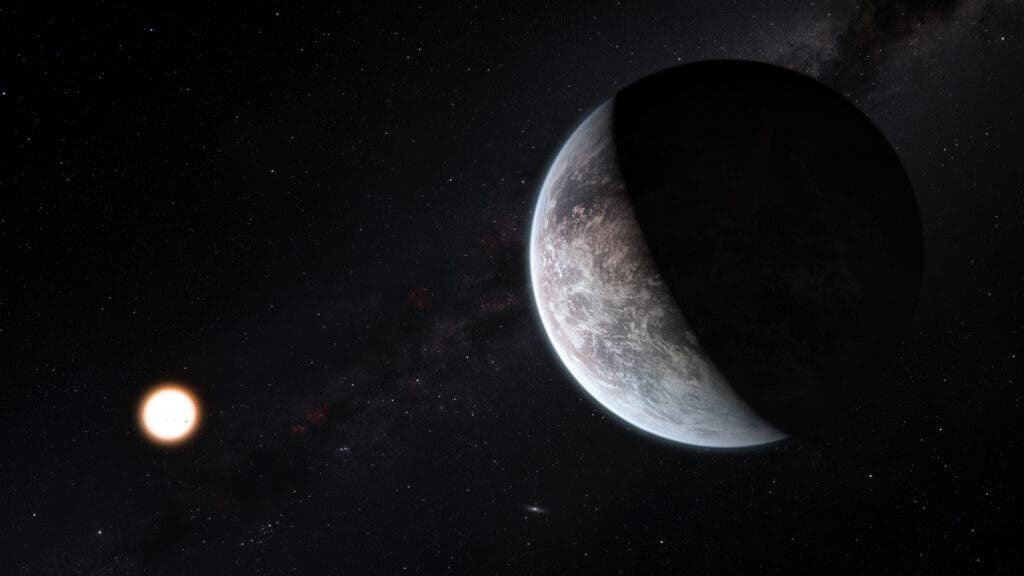Planets don’t necessarily need to be like Earth to host life. They can have different atmospheres, different sizes, orbit different types of stars — as long as all of these work together to create the right conditions for life, it doesn’t really have to be Earth-like. An example of this is planets with atmospheres dominated by hydrogen and helium (ours is dominated by nitrogen and oxygen). According to a new study, rocky exoplanets with this type of atmosphere can sustain liquid water (and quite possibly, life) for billions of years.

Astronomers have been looking at our solar system, then at the rest of our galaxy, then at our solar system again — our solar system is not standard at all.
First, researchers noticed that a lot of planets appear to be Hot Jupiters: Jupiter-like planets that migrated close to their star and have become extremely hot. We don’t really have a hot Jupiter in our solar system, which suggested that our solar system may not be the most standard one. Then, further research showed that hot Jupiters are not that common — astronomers had just been discovering them because they were easier to spot. But it was also found that super-Earths, rocky planets more massive than Earth but not as massive as ice giants like Neptune or Jupiter, are super common. We also don’t have a super-Earth in our solar system, so this implies once again that we’re a bit of an outlier. This is still the current understanding.
So if our solar system is not that common and we’re looking for habitable planets, we may be better off looking at different types of planets. But what type?
Life as we know it requires three things: an energy source, nutrition, and liquid water. After that, it’s not clear to what extent conditions need to resemble that on Earth to be habitable; it could be a rocky planet, it could be a satellite like Europa or Enceladus, it could be something different altogether. In the new study, three researchers working at Bern and Zurich universities in Switzerland looked at planets rich in the two lightest chemical elements: hydrogen and helium.
When solar systems form, the whole process enriches young planets with these two elements. After some time, planets lose this primordial atmosphere in favor of heavier elements (like oxygen and nitrogen) — this is exactly what we see in our solar system, with Earth. But a large, rocky exoplanet that’s far away from its star could retain the hydrogen and helium.
The fact that these gases would be preserved is essential, as this means the greenhouse effect could warm such planets to habitable temperatures. Nowadays, we know the greenhouse effect as a villain (because we’re spewing out too many greenhouse gases and it’s heating the planet very quickly), but some level of greenhouse effect is good because it makes the Earth so pleasantly habitable. Without greenhouse gases, Earth’s surface would be some 33°C (59°F) cooler.
So what sort of greenhouse planet are we considering? Well, in order for this greenhouse effect to work, the planet would need to be pretty massive.
“The primordial atmosphere, dominated by hydrogen and helium, would have insufficient greenhouse gases that are important on Earth, such as CO2 or methane. However, if the atmosphere is massive enough, hydrogen will act as a greenhouse gas,” the researchers write in the study.
The team used a numerical model to see how long such planets could maintain habitable conditions (in other words, host liquid water on their surface). The team found that depending on the mass of the planet and the distance from its star, some planets could maintain habitable conditions for up to 8 billion years.
This suggests that the concept of planetary habitability should be revised and made more inclusive, considering the possibility that such systems, once disregarded from a habitability standpoint, are also worthy of interest.
“Most planets accrete envelopes that are too big for liquid water conditions, making a potential surface temperature too hot. Nevertheless, planets with the required initial conditions do occur,” the researchers add.
There are still questions. Could such a planet form or accumulate liquid water? What kind of conditions would be necessary? We don’t know yet — but we need to remain open-minded when investigating habitability on other planets, the researchers conclude.
The study was published in Nature Astronomy.






